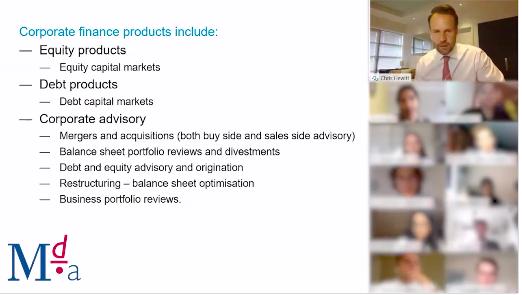Hosting hybrid events in 2024 will provide events planners with a bridge between live and virtual audiences.
Live events around the world were grounded to a halt in the spring. And, the likelihood of live events returning to 2019 levels (for the time being, at least), is low. When you consider that COVID-19 was responsible for cancelling the plans of more than 83-million event-goers in April alone, it’s clear why.
That’s why we’ve put together a starter guide to hybrid events; to help convince you that they are a worthwhile investment for your business or organisation in the New Year.
What are hybrid events?
Hybrid events are, in their simplest form, a mix of live and virtual events. By combining a live event (complete with speakers and attendees), with a virtual component, your intended audience will be able to engage with the event, regardless of where they are.
The critical component of a hybrid event is engagement. Keeping hybrid events engaging is what provides events planners with an added challenge – after all, it’s far easier for a virtual participant to leave a conference early, than someone who is there in person!
What do hybrid events look like?
While they may sound similar, hybrid events are not to be confused with live events with some technical elements. When attending a hybrid event, virtual event-goers are provided with more engaging features, including dynamic camera angles, and a host dedicated to keeping energy high within the virtual cohort.
The best hybrid events provide seamless integration between the virtual audience and their live counterparts. By utilising the latest technologies, hybrid event planners can put both audiences first, regardless of how they are attending.
Whether your participants are sitting in an auditorium or tuning in from home, you want them both to have the same experience. After all, those tuning in from home won’t feel obliged to stay if the experience doesn’t live up to their expectations, and won’t hesitate to switch off.
For a virtual audience member, providing high-quality content will be essential. They’re not interested in recreating the physical event experience – they only want to engage and learn from the content you provide, and connect with other participants (both online and in-person).
Plus, at hybrid events, virtual participants would expect to partake in an event in the same way a physical attendee would – by joining in with Q&A sessions, and interacting with the speakers and other attendees.
What are the benefits of hosting a hybrid event?
While hybrid events may seem perfectly suited for the post-COVID world, they aren’t new. The CDC hosted the first hybrid event in 2012 as a way to combat budget cuts.
And, with 62% of events planners saying that hybrid events are the future, we’ve put together the key benefits of your organisation hosting a hybrid event in 2024:
Increased attendance and reach

In a potentially post-COVID world, some attendees may be hesitant to attend a large event or conference in person. Going hybrid can help your organisation cater to both a live and virtual audience.
By opening an event up to a virtual audience, the number of potential attendees engaging with your content also increases exponentially.
The opportunity to increase attendance makes it one of the most significant advantages to including a virtual component to your event. Physical or geographical boundaries don’t bind hybrid events; thus, anyone, anywhere in the world, can attend and engage with your content.
Increased cost-effectiveness

Hybrid events can help planners optimise and increase the ROI of an event.
Traditionally (or, rather, pre-COVID), businesses would have organised many, similar events across several cities, regions (or even countries). By streamlining this process, and hosting just one event with virtual components, a single hybrid event could be held for an organisation’s entire audience.
Plus, after hosting a hybrid event, 23% of event organisers said more attendees participated in future events. So, by hosting a hybrid event, not only could you reduce the general overheads associated with organising multiple conferences, but you could also secure future attendees in the process!
Reduced environmental impact

The International Energy Agency (IEA) says that global energy usage will fall by 6% this year, as a direct result of the coronavirus pandemic. With this in mind, it’s safe to assume that many workers will want to maintain the positive repercussions of working from home in 2024.
Going hybrid is a fantastic way to accommodate attendees who are not only conscious of their carbon footprint, but may not feel comfortable attending events in-person, either.
A reduced physical headcount also has several benefits (even if it seems counterproductive). Fewer people means less catering (which would, in turn, lead to less food waste) and no need to provide in-person accessories (like agendas or merchandise).
Plus, more virtual attendees also reduces travel costs, meaning there’s a greater ROI available for event sponsors.
How can MDA Training help you plan a hybrid event in 2024?
Here at MDA Training, we have been running virtual, physical and hybrid events for over thirty years. We’re the trusted partner of choice for many global organisations, continually sharing our knowledge and insights with leading businesses.
Working alongside our team, the hassle of organising your events will disappear. We can be involved as much or as little as you need us to be, to ensure your event is engaging for all attendees.
Plus, our approach is entirely flexible, meaning we can cater our approach depending on your preference of technologies or platforms! From large conferences to team business simulations and recruitment events, you can be safe in the knowledge that your events in the New Year are engaging, insightful and organised.














